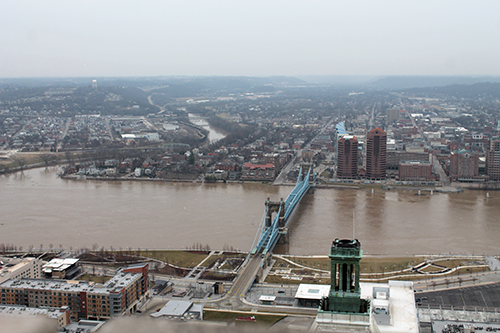posted by Alecia Kintner ON
Aug 10, 2018

I had the good fortune this week to spend time with the head of philanthropy for Microsoft, who was visiting Cincinnati for the first time. I take every such opportunity to talk about my favorite subject: the power of the arts in local communities. After all, it’s a great privilege to have the means and influence to tackle global challenges, but how do we — and corporate giants in our midst — also protect the things we value at home?
After this encounter, I’m doubling down on the importance of my argument. But, I’m reminded of new realities — and a unique opportunity — that Cincinnatians ought to think about, too.
We forget, in Cincinnati, that other regions in the U.S. are populated by newer-on-the-scene residents. Here, we value rootedness — in fact, it's one of ArtsWave's five Blueprint goals: to leverage the arts to deepen roots in this community. But other communities are vastly different: instead of roots, they are built on transience.
The companies being created and giganti-sized in Silicon Valley are not necessarily started by kids who went to high school on an east or west side of town, and who grew up with memories of nearby arts experiences. Instead, they are being launched with customers, employees and suppliers at remote locations around the world. The idea that local conditions and assets, like the arts, might play a role in their business success or employee satisfaction, is kind of, well, foreign. Equally hazy is the idea that local assets, like the arts, need consistent support in the form of time and money. This poses immense sustainability challenges to arts organizations and confounds their ability to provide broad public benefit. It’s a threat that keeps me up at night.
Departing CEO of Cintrifuse, Wendy Lea, who has been so transformational for Cincinnati’s start-up economy, has also been a fantastic champion for the arts as a creative stimulus to innovation across sectors. She immediately saw a different constellation in Cincinnati than in newer communities like Silicon Valley, which haven't enjoyed decades of steady philanthropic support leading to vibrant, thriving arts institutions and an established ecosystem of creatives working in commercial enterprises. This is what we have in Cincinnati.
Wendy articulated a different future: one where busy founders of start-ups took inspiration and personal sustenance from a city alive with hands-on, visible arts and culture. A city where the heart of the new tech-based economy is within walking distance of no less than eight venues (old and new) for live music, dance and theater and two schools of the arts, not to mention maker-spaces, marketing/creative agencies and galleries. The opportunity that exists rather uniquely in Cincinnati to mash up century-old arts organizations (filled with thoroughly modern artists, by the way) with entrepreneurs and start-ups is one that could become an intentional long-term differentiator for our region.
Thank you, Wendy, for giving my "support local arts" bandwagon new credence in an entirely global world, and for giving Cincinnati a glimpse of where we might fit within it.